Rubber or leather — it’s one of the biggest choices you’ll make when upgrading your watch strap. Both materials offer something unique, and depending on your lifestyle, one might suit you better than the other. Here's a practical breakdown of the pros, cons, and ideal uses of each.
Rubber Watch Straps
Rubber straps are all about function and durability. They’re water-resistant, lightweight, and built to handle whatever your day throws at you — whether that’s a dive trip, a hike, or just running errands in the summer heat.
Pros:
- Resistant to water, sweat, and UV
- Comfortable and flexible for long wear
- Easy to clean and maintain
- Great for sporty, casual watches
Cons:
- Not as formal as leather
- Can feel too casual with dressier outfits
Looking for rubber straps? Explore options for Rolex, Omega, MoonSwatch, and Tudor
Leather Watch Straps
Leather straps are timeless. They bring warmth and sophistication to any timepiece and pair beautifully with everything from casual wear to suits and dress shirts.
Pros:
- Classic, refined appearance
- Great for business, formal, and everyday wear
- Ages beautifully over time
- Versatile and elegant
Cons:
- Not ideal for water or heavy sweat
- Needs more care and maintenance
See leather strap options for Cartier, IWC, Panerai, and Patek Philippe
Not sure what fits your watch? Use our Strap Finder Tool to quickly find straps compatible with your model.
At the end of the day, the right strap comes down to your watch and your lifestyle. Many collectors keep both rubber and leather on hand — switching them out depending on the season, event, or outfit.
Start browsing from the Helvetus homepage to find the perfect strap for your timepiece.
—
Helvetus is not affiliated with any watch brands. All names are used for compatibility reference only.


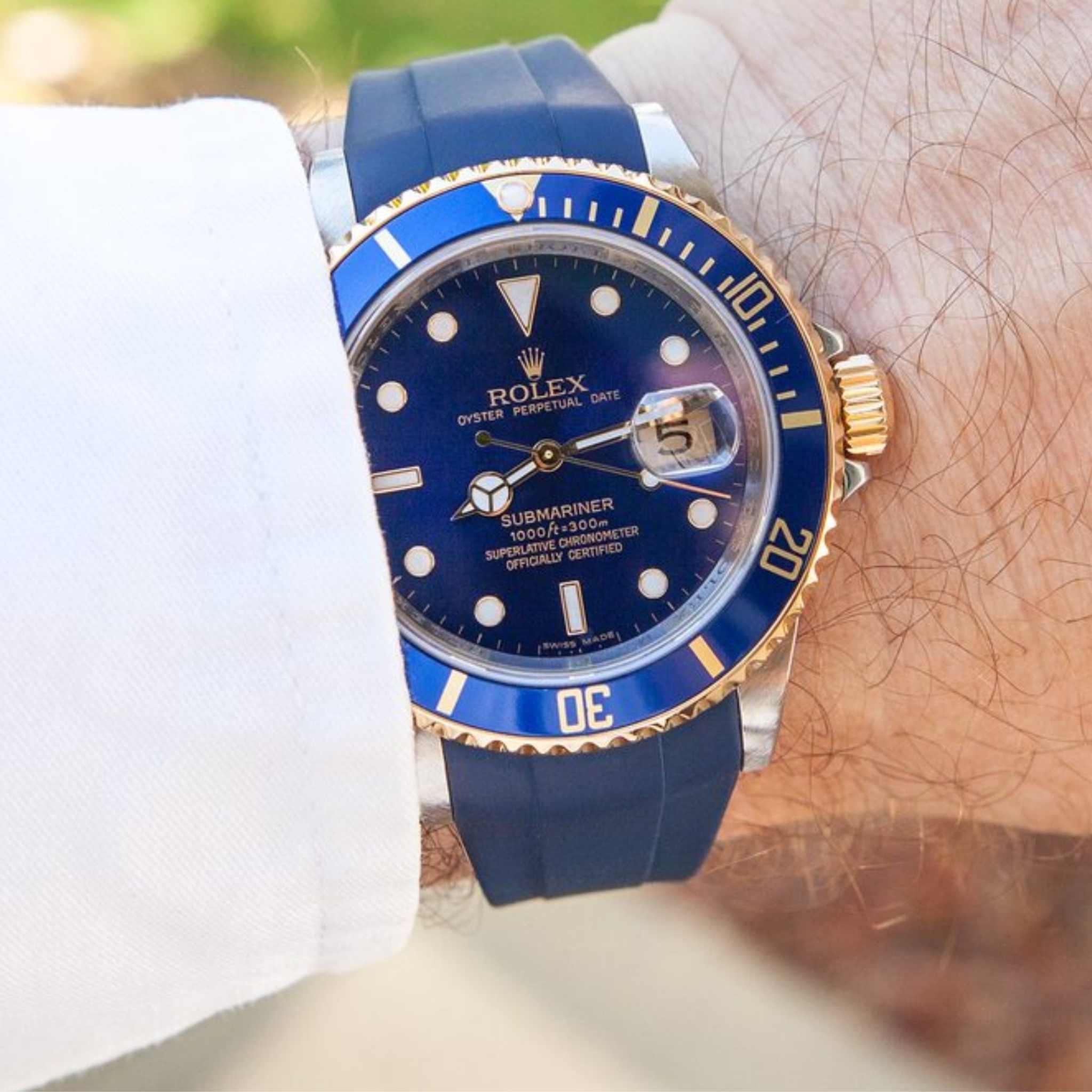

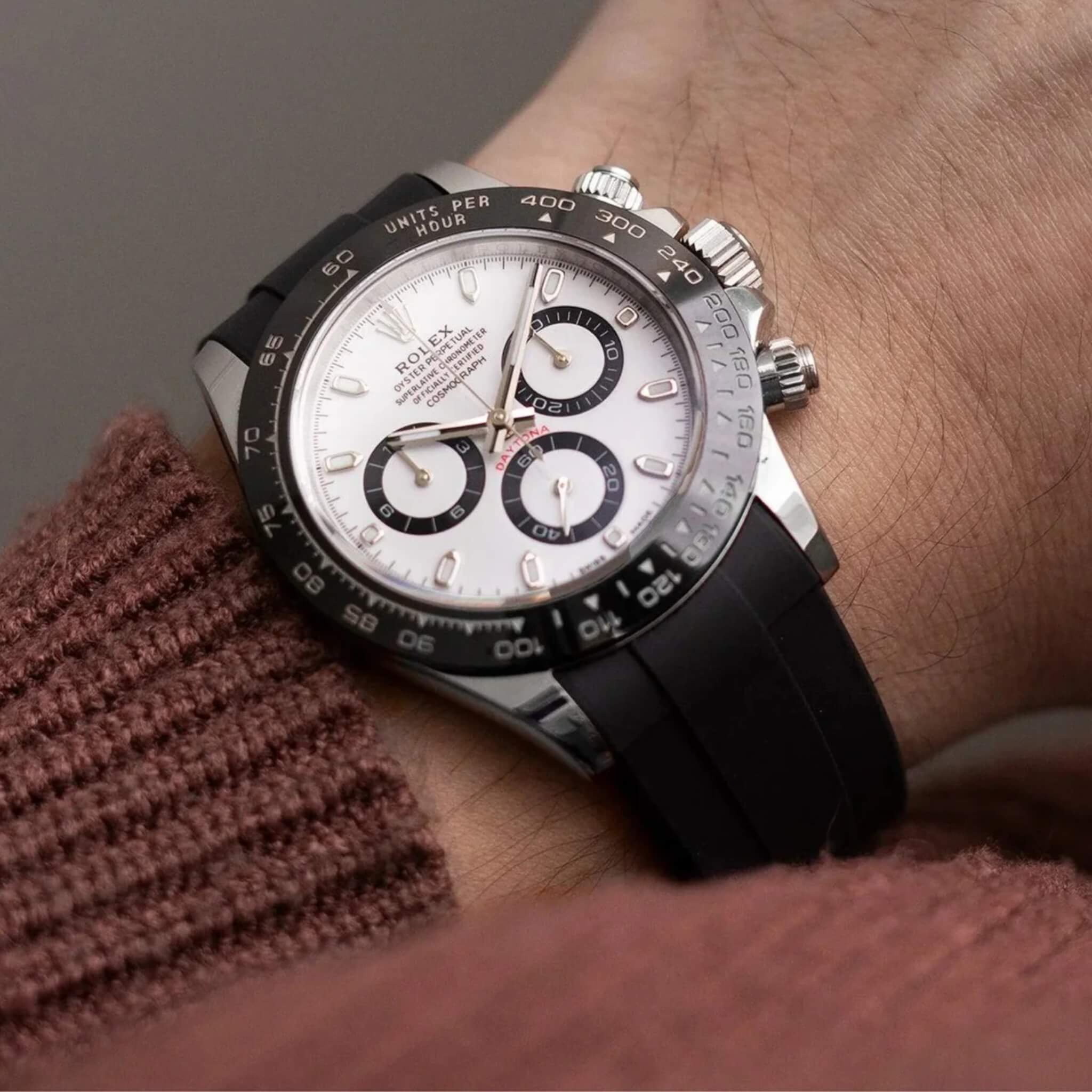
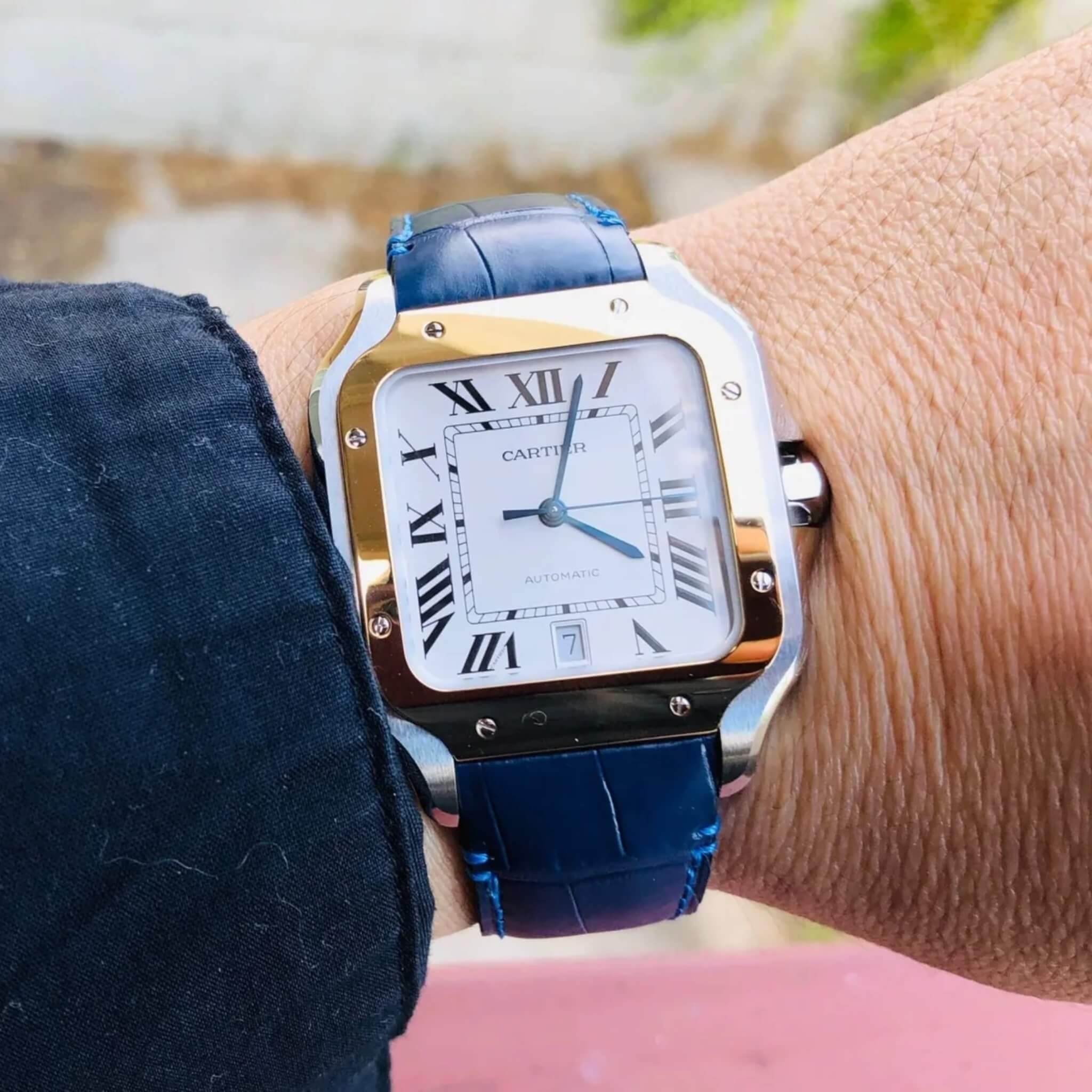
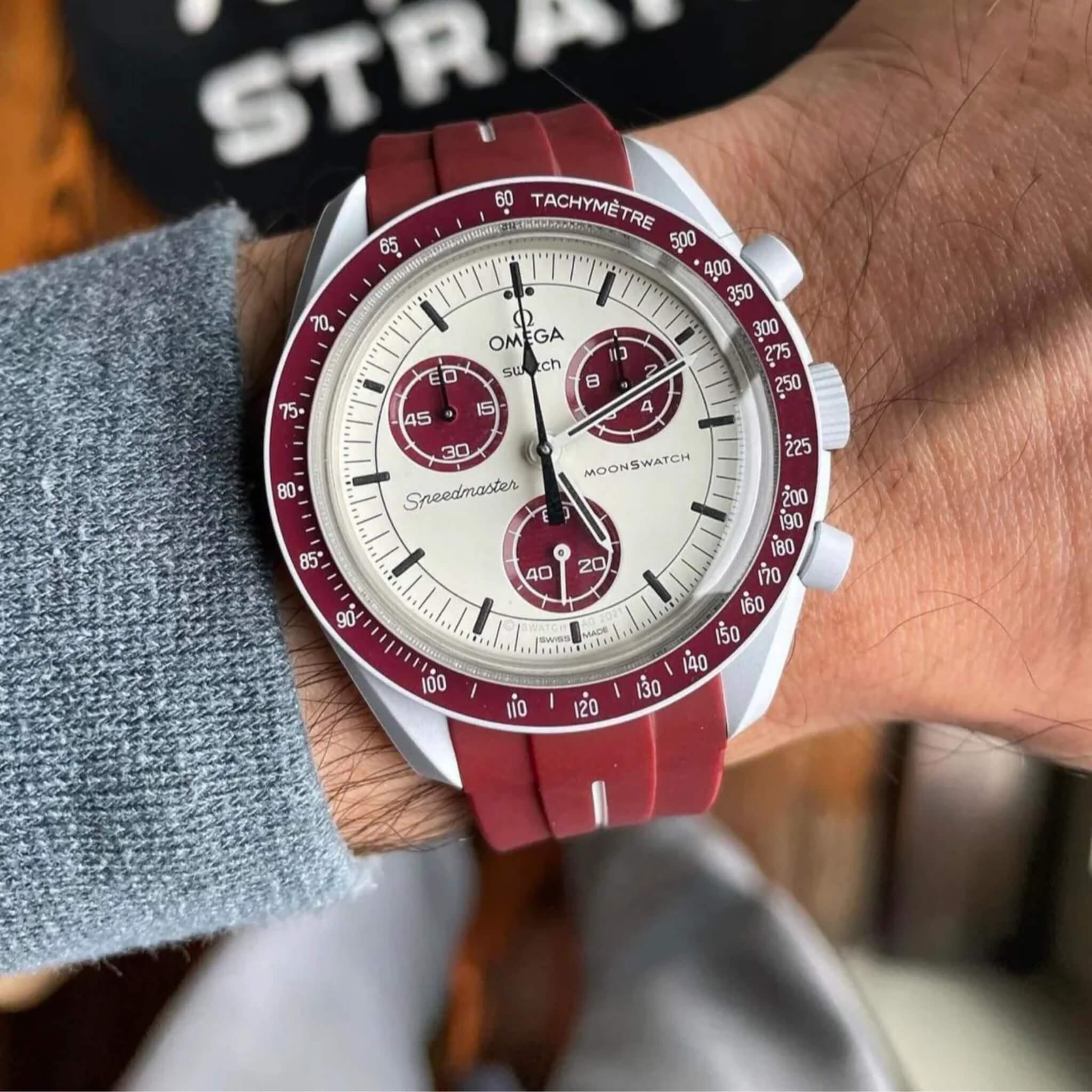
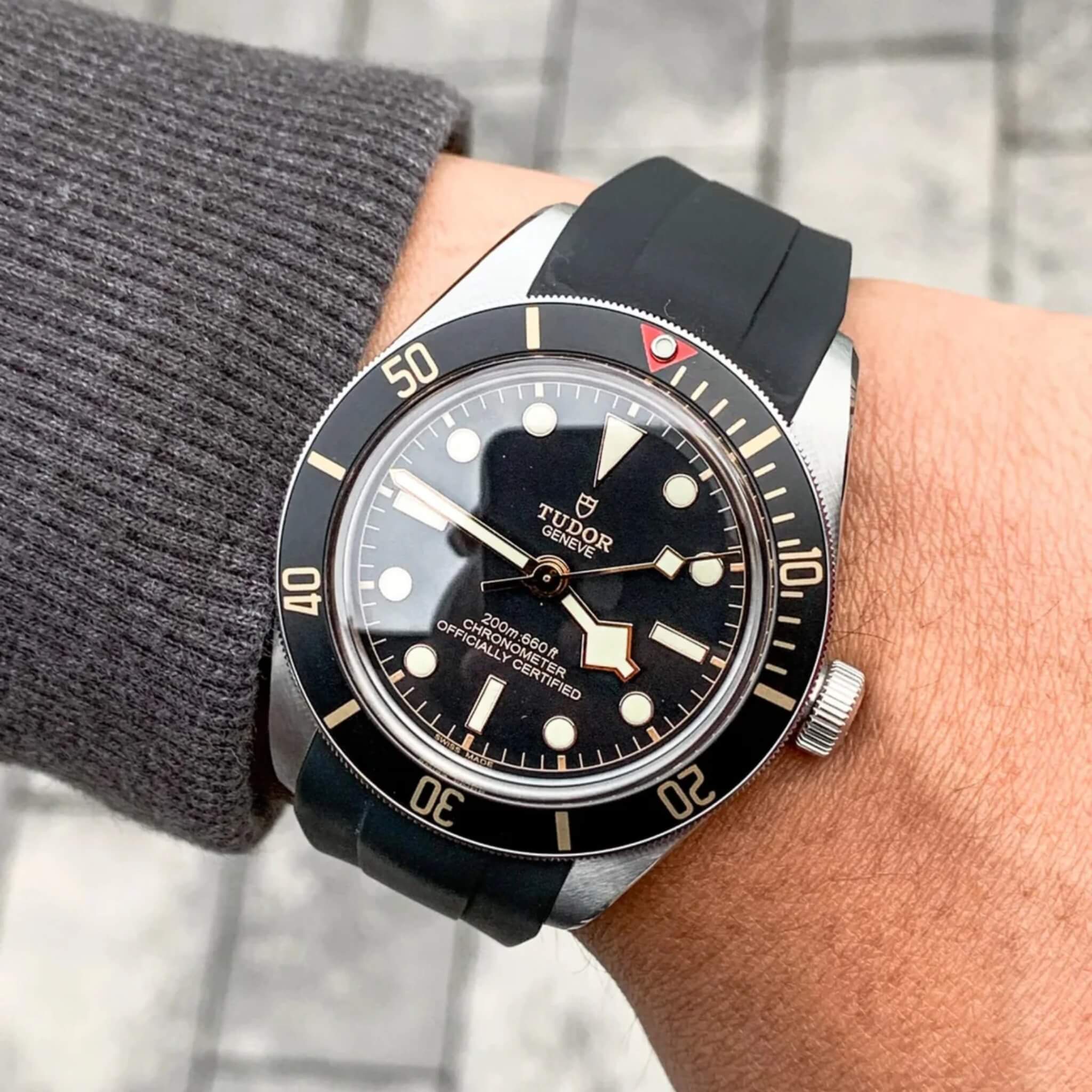
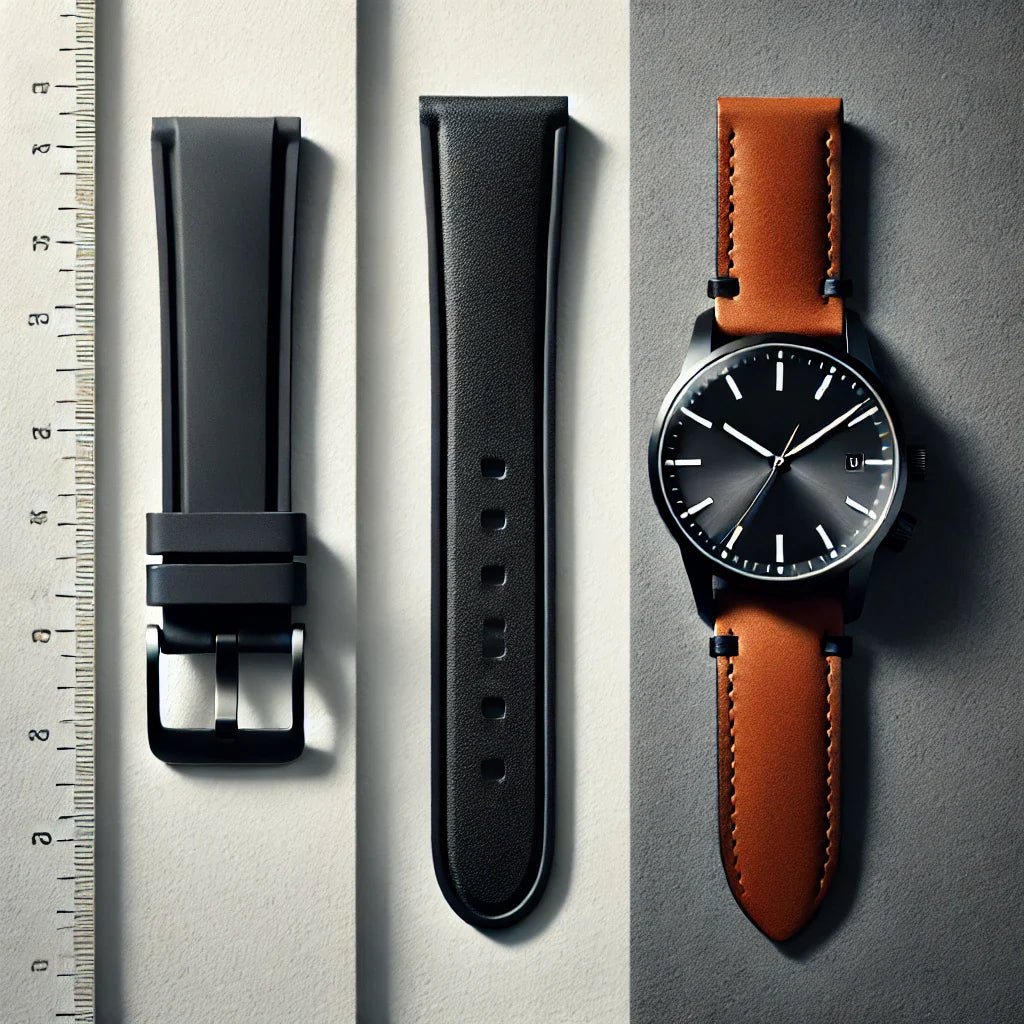

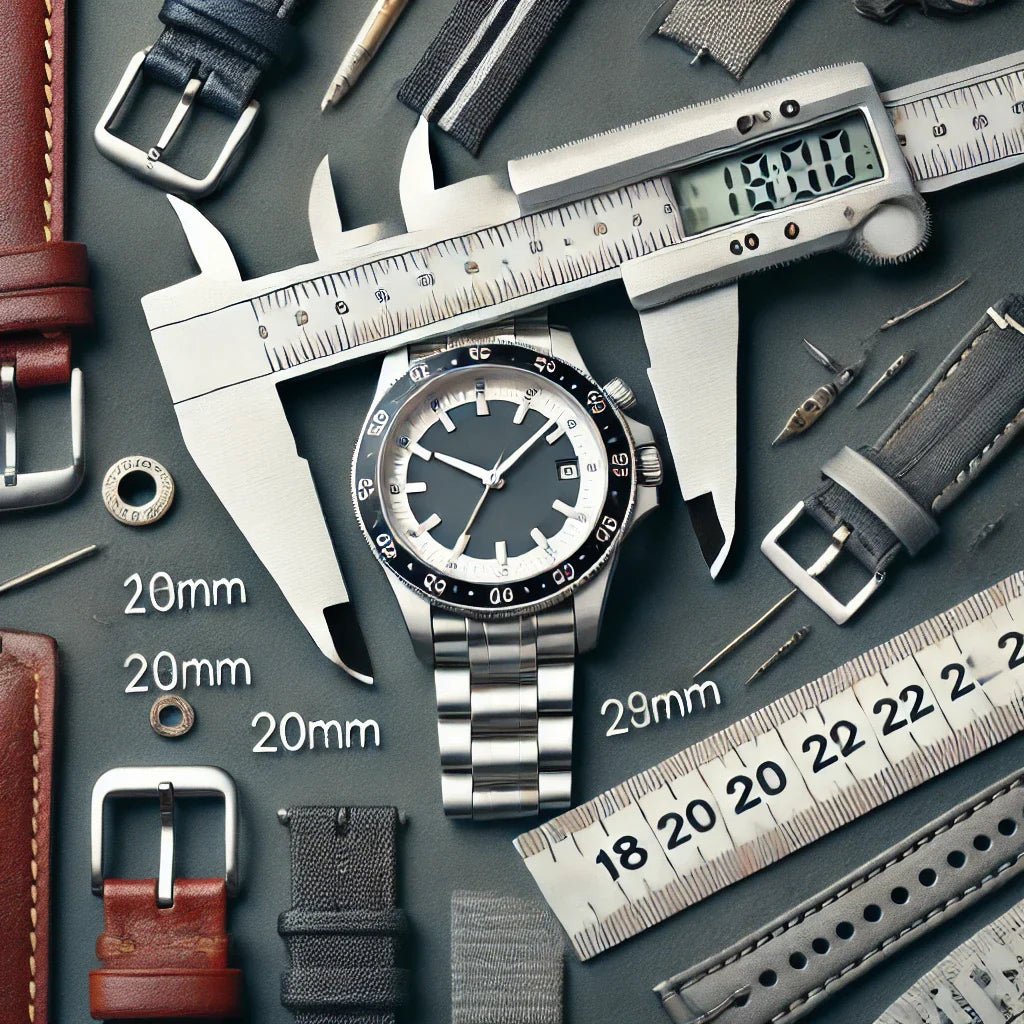
Leave a comment
This site is protected by hCaptcha and the hCaptcha Privacy Policy and Terms of Service apply.